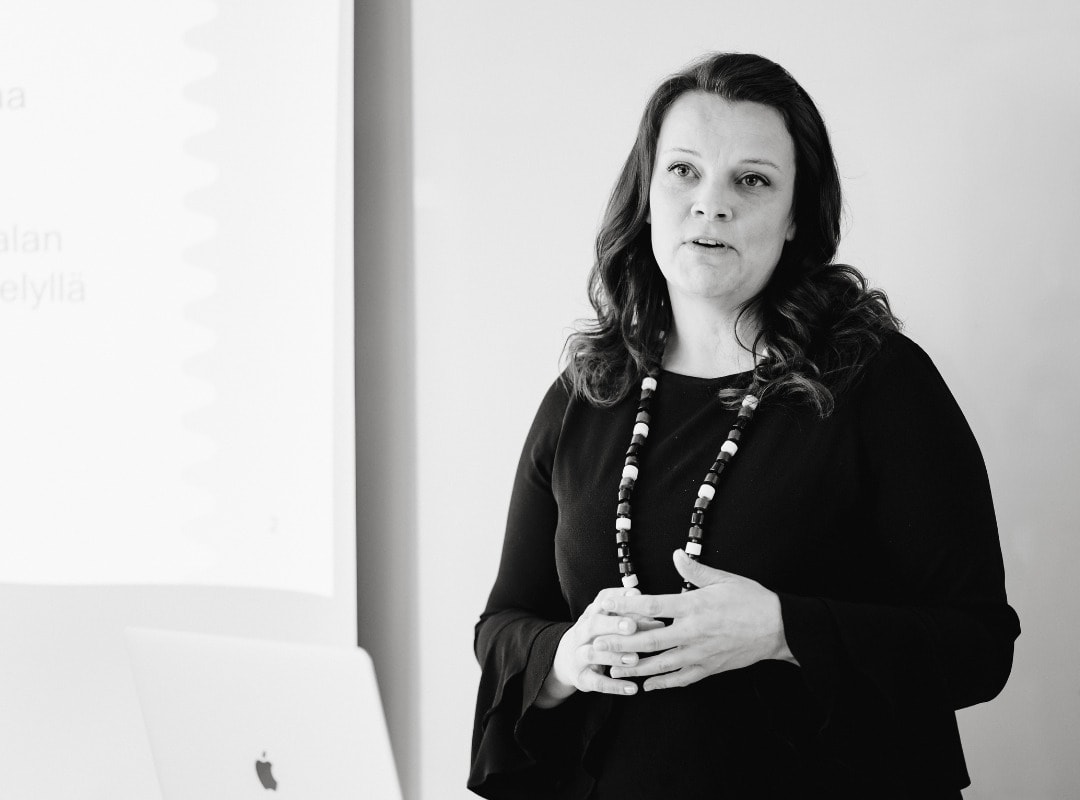The entire public sector is continuously challenged to reduce costs, streamline services, and adapt to changing demographics. Cities experience shifts in the needs and expectations of their citizens, who desire personalised services. As a result, they must explore innovative ways to deliver flexible and tailored services to citizens with different preferences and needs. This transformation calls for open-mindedness and fresh problem-solving approaches.
At the end of March, we arranged an event to discuss how city design has proven to be the solution to tackle the inevitable transformation. We had the pleasure to have the city design pioneer Sara Ikävalko, City and Service Designer, Senior Lecturer and Programme Coordinator of Urban and Service Design at LAB University of Applied Sciences, and Johanna Sinkkonen, Participation Manager at the City of Helsinki as speakers, sharing their experience within city design. This blog post summarises the key findings of the day.

Saara Ikävalko, City and Service Designer, Senior Lecturer and Programme Coordinator of Urban and Service Design at LAB University of Applied Sciences talking about what city design is and how public sector organisations can benefit from it.

Johanna Sinkkonen, Participation Manager at the City of Helsinki, talking about experiences of city design from the City of Helsinki’s perspective
City design has traditionally focused on the physical design of urban spaces. However, it encompasses much more than that. In essence, city design is the application of design thinking principles to all aspects of city development, including the physical layout, city services, and city organisations. As design thinking is a user-centric approach emphasising empathy, experimentation, and iteration, it enables the creation of experiences that genuinely resonate with citizens.
City design offers numerous benefits for building future cities:
Empathy and human-centricity: Design thinking prioritises understanding the needs, preferences, and pain points of end-users and service providers. In city design, this involves considering the diverse needs of for example residents, visitors, businesses, and city employees and having all of them participate in city development.
Collaboration and co-creation: Design thinking fosters collaboration and co-creation among various disciplines, promoting the exchange of ideas and expertise. In city design, this collaborative approach brings city planners, citizens, and many other stakeholders together to create new solutions. This collaboration fuels innovation and strengthens commitment to the city.
Iterative process: Design thinking employs an iterative process of prototyping, testing, and refining solutions based on user feedback. By adopting this approach in city design, cities can continuously improve their services, ensuring that they remain relevant and responsive to the changing needs of their citizens.
Creative problem solving: Design thinking encourages creative problem-solving techniques to tackle complex challenges. In the city context, this means promoting experimentation and exploring unconventional ideas, which allows developing innovative solutions that enhance the functionality, sustainability, and livability of cities.
Embracing uncertainty: Design thinking emphasises embracing ambiguity and uncertainty, recognising that the best solutions often arise from navigating complex and unpredictable situations. In city design, this mindset helps adapting to the ever-changing city landscape and developing more resilient and flexible services.
Sustainability and future orientation: Design thinking highlights the importance of considering long-term implications and the potential impact of solutions on the environment and future generations. By integrating these principles into city design, cities can become more sustainable, resilient, and adaptable to changing environmental and social conditions.
In conclusion, city design plays a crucial role in shaping future cities by fostering empathy, promoting cross-disciplinary collaboration, encouraging iterative processes, and supporting creative problem-solving. By incorporating design thinking principles into city development, cities can become more innovative, user-centric, and sustainable, ultimately enhancing the quality of life for their citizens.


